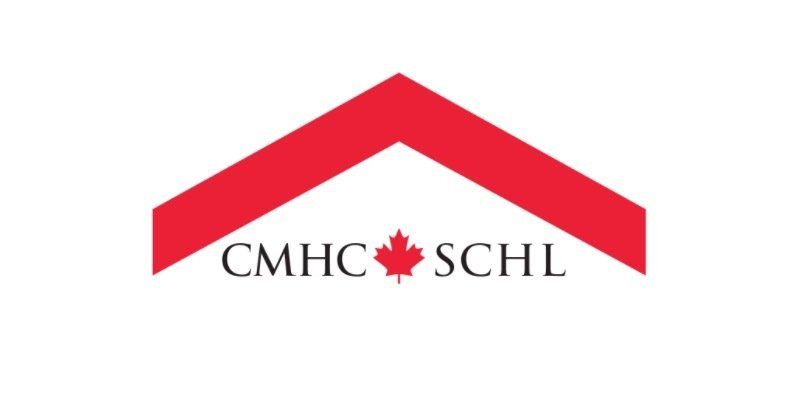CMHC Guidelines Changing July 1st 2020
Diane Gogar • June 5, 2020

CMHC just shared the following press release. If you have any questions, please don’t hesitate to contact me anytime!
CMHC RELEASE JUNE 4th 2020
The COVID-19 pandemic is affecting all sectors of Canada’s economy, including housing. Job losses, business closures and a drop in immigration are adversely impacting Canada’s housing markets, and CMHC foresees a 9% to 18% decrease in house prices over the next 12 months. In order to protect future home buyers and reduce risk, CMHC is changing its underwriting policies for insured mortgages.
Effective July 1, the following changes will apply for new applications for homeowner transactional and portfolio mortgage insurance:
- Limiting the Gross/Total Debt Servicing (GDS/TDS) ratios to our standard requirements of 35/42;
- Establish minimum credit score of 680 for at least one borrower; and
- Non-traditional sources of down payment that increase indebtedness will no longer be treated as equity for insurance purposes.
To further manage the risk to our insurance business, and ultimately taxpayers, during this uncertain time, we have also suspended refinancing for multi-unit mortgage insurance except when the funds are used for repairs or reinvestment in housing. Consultations have begun on the repositioning of our multi-unit mortgage insurance products.
“COVID-19 has exposed long-standing vulnerabilities in our financial markets, and we must act now to protect the economic futures of Canadians,” said Evan Siddall, CMHC’s President and CEO. “These actions will protect home buyers, reduce government and taxpayer risk and support the stability of housing markets while curtailing excessive demand and unsustainable house price growth.”
These decisions are within CMHC’s authorities under the National Housing Act and are in anticipation of potential house price adjustment. We will continue to monitor market conditions and work with our federal colleagues on potential macro-prudential policy options.
CMHC supports the housing market and financial system stability by providing support for Canadians in housing need, and by offering housing research and advice to all levels of Canadian government, consumers and the housing industry.

Thinking About Selling Your Home? Start With These 3 Key Questions Selling your home is a major move—emotionally, financially, and logistically. Whether you're upsizing, downsizing, relocating, or just ready for a change, there are a few essential questions you should have answers to before you list that "For Sale" sign. 1. How Will I Get My Home Sale-Ready? Before your property hits the market, you’ll want to make sure it puts its best foot forward. That starts with understanding its current market value—and ends with a plan to maximize its appeal. A real estate professional can walk you through what similar homes in your area have sold for and help tailor a prep plan that aligns with current market conditions. Here are some things you might want to consider: Decluttering and removing personal items Minor touch-ups or repairs Fresh paint inside (and maybe outside too) Updated lighting or fixtures Professional staging Landscaping or exterior cleanup High-quality photos and possibly a virtual tour These aren’t must-dos, but smart investments here can often translate to a higher sale price and faster sale. 2. What Will It Actually Cost to Sell? It’s easy to look at the selling price and subtract your mortgage balance—but the real math is more nuanced. Here's a breakdown of the typical costs involved in selling a home: Real estate agent commissions (plus GST/HST) Legal fees Mortgage discharge fees (and possibly a penalty) Utility and property tax adjustments Moving expenses and/or storage costs That mortgage penalty can be especially tricky—it can sometimes be thousands of dollars, depending on your lender and how much time is left in your term. Not sure what it might cost you? I can help you estimate it. 3. What’s My Plan After the Sale? Knowing your next step is just as important as selling your current home. If you're buying again, don’t assume you’ll automatically qualify for a new mortgage just because you’ve had one before. Lending rules change, and so might your financial situation. Before you sell, talk to a mortgage professional to find out what you’re pre-approved for and what options are available. If you're planning to rent or relocate temporarily, think about timelines, storage, and transition costs. Clarity and preparation go a long way. The best way to reduce stress and make confident decisions is to work with professionals you trust—and ask all the questions you need. If you’re thinking about selling and want help mapping out your next steps, I’d be happy to chat anytime. Let’s make a smart plan, together.

As patios wind down and pumpkin spice ramps up, fall is the perfect reset for your home—and your homeowner game plan. These quick wins boost comfort, curb appeal, and efficiency now, and set you up for a low-stress winter (and a strong spring market). 1) Safety & “silent leak” checks (Weekend-ready) Clean gutters & downspouts. Add leaf guards where trees overhang. Roof scan. Look for lifted shingles, cracked flashings, or moss. Seal the shell. Re-caulk window/door trim; replace weatherstripping. Test alarms. New batteries for smoke/CO detectors; add one near bedrooms. Why it matters: Prevent water intrusion and heat loss before storms roll in. 2) Heat smarter, not harder Furnace/boiler tune-up and filter change. Smart thermostat with schedules and geofencing. Draft hunt. Foam gaskets behind outlets, door sweeps on exterior doors. ROI tip: Efficiency upgrades lower monthly bills and can improve lender ratios if you’re eyeing a refinance later. 3) Fall-proof your yard (so spring you says “thanks”) Aerate + overseed + fall fertilize for thicker turf next year. Trim trees/shrubs away from siding and power lines. Mulch perennials and plant spring bulbs now. Shut off/bleed exterior taps and store hoses to avoid burst pipes. 4) Extend outdoor season (cozy edition) Portable fire pit or propane heater + layered blankets. Path/step lighting for darker evenings (solar or low-voltage). Weather-resistant storage for cushions/tools to preserve value. Neighborhood curb appeal: Warm lighting and tidy beds make a big first impression if you list in shoulder season. 5) Water management = winter peace of mind Re-grade low spots and add downspout extensions (2–3+ metres). Check sump pump (and backup). Look for efflorescence or damp corners in the basement. 6) Mini-renos that punch above their weight Entry/mudroom upgrade: hooks, bench, boot trays, closed storage. Laundry room tune-up: counter over machines, sorting bins, task lighting. Kitchen refresh: new hardware, tap, and under-cabinet lighting in one afternoon. Budget guide: Many of these land under a micro-reno budget—perfect for a modest line of credit. 7) Indoor air quality tune-up Deep clean vents and dryers (including the rigid duct). Add door mats (exterior + interior) to catch grit/salt. Houseplants or HEPA purifier for closed-window months. Fast Timeline (pin this to the fridge) Late August–September Gutters/downspouts, roof/caulking, HVAC service, lawn care, plant bulbs, exterior tap shut-off plan, path lighting. October Weatherstripping/sweeps, fire pit setup, organize mudroom/garage, test alarms, sump check, downspout extensions, dryer vent cleaning. Financing smarter: make your mortgage work for your home Annual mortgage check-in. As rates, income, and goals evolve, a quick review can free up cash flow or open options for a small fall project budget. HELOC vs. top-up refinance. For bite-size projects, a HELOC can be flexible. For bigger renos you plan to pay down, a top-up refi might make more sense. Bundle & prioritize. Knock out the high-impact, low-cost items first (air sealing, safety, water management) before the cosmetic upgrades. Not sure which route fits your fall plans? We’ll run the numbers and map the best financing path for your specific budget and goals. Quick Checklist (copy/paste) ☐ Clean gutters/downspouts; add guards ☐ Roof & flashing visual check ☐ Re-caulk, weatherstrip, add door sweeps ☐ HVAC service + new filter ☐ Aerate/overseed/fertilize; trim trees; plant bulbs ☐ Path & entry lighting ☐ Drain/bleed outdoor taps; store hoses ☐ Downspout extensions; sump test ☐ Dryer vent cleaning ☐ Mudroom/garage organization ☐ Schedule mortgage review / discuss HELOC vs refi Ready to make fall your low-stress season? Book a quick fall mortgage check-up—15 minutes to see if a small credit line or a tweak to your current mortgage could cover your priority projects without straining cash flow.



